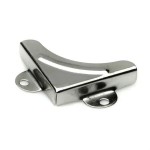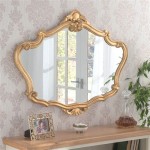Mirror Mac Onto Samsung Smart TV
Mirroring a Mac's display onto a Samsung Smart TV offers a convenient way to share presentations, enjoy media content on a larger screen, or extend the workspace. Several methods facilitate this screen mirroring, each with its own advantages and limitations.
Using AirPlay 2: AirPlay 2 is a proprietary wireless streaming protocol developed by Apple. It enables seamless streaming of audio and video content from Apple devices to compatible smart TVs, including select Samsung models. To utilize AirPlay 2, users require a compatible Mac (typically 2018 or later running macOS Mojave or later) and a Samsung Smart TV that supports AirPlay 2. Verifying the TV's compatibility is crucial, as not all Samsung Smart TVs offer this feature. If the TV supports AirPlay 2, ensuring both the Mac and the TV are connected to the same Wi-Fi network is essential. The AirPlay icon will then appear in the Mac's menu bar, allowing users to select their Samsung TV as the output display.
Advantages of AirPlay 2: AirPlay 2 offers high-quality streaming with minimal latency, making it suitable for watching videos and playing games. Its ease of use, requiring minimal setup and configuration, is another significant advantage.
Limitations of AirPlay 2: The primary limitation is the requirement for a compatible Samsung Smart TV. Older Samsung models may not support AirPlay 2, necessitating alternative mirroring methods. Additionally, network congestion can sometimes impact streaming performance.
Utilizing HDMI Cables: A direct wired connection using an HDMI cable provides a reliable and stable mirroring solution. This method requires an HDMI cable, an HDMI port on the Samsung Smart TV, and an HDMI port or a suitable adapter for the Mac. Connecting the HDMI cable between the Mac and the TV establishes a direct connection, enabling screen mirroring. The TV's input source needs to be switched to the corresponding HDMI port.
Advantages of HDMI Cables: HDMI offers a stable connection with minimal latency, making it ideal for activities requiring precise timing, such as gaming. It bypasses the need for a wireless network, eliminating potential network-related issues. HDMI cables are also widely available and relatively inexpensive.
Limitations of HDMI Cables: The wired connection limits mobility, requiring the Mac to remain physically close to the TV. Managing cables can also be inconvenient, especially in setups with limited space.
Mirroring with Third-Party Applications: Various third-party applications facilitate screen mirroring between Macs and Samsung Smart TVs. These applications typically require installation on both the Mac and the TV (or a connected streaming device) and often establish a connection over the local Wi-Fi network. Some popular options include AirServer and Reflector.
Advantages of Third-Party Applications: These applications can bridge compatibility gaps, enabling mirroring even if the Samsung TV doesn't natively support AirPlay 2. They often offer additional features beyond basic screen mirroring, such as screen recording and streaming to multiple devices.
Limitations of Third-Party Applications: Third-party applications can introduce additional latency compared to direct methods like AirPlay 2 or HDMI. Some applications require a subscription fee, and the performance can vary depending on the specific application and network conditions.
Troubleshooting Common Issues: If mirroring issues arise, several troubleshooting steps can be taken. Verifying network connectivity is crucial. Ensuring both the Mac and the TV are connected to the same Wi-Fi network and that the network is functioning correctly is paramount. Restarting both the Mac and the TV can often resolve temporary glitches. Checking for software updates for both the Mac operating system and the Samsung TV's firmware is advisable. If using AirPlay 2, ensuring that the AirPlay setting is enabled on both the Mac and the TV is essential. For HDMI connections, checking the cable for damage and ensuring it is securely plugged into both devices is crucial. Consulting the Samsung TV's user manual or contacting Samsung support can provide further assistance for specific TV models.
Choosing the Right Method: The optimal mirroring method depends on individual needs and the specific equipment available. AirPlay 2 offers a seamless wireless experience for compatible devices. HDMI provides a stable and reliable wired connection. Third-party applications offer flexibility for devices that don't natively support AirPlay 2. Evaluating the advantages and limitations of each method helps determine the most suitable approach for specific mirroring requirements.

How To Screen Mirror Mac Samsung Tv Step By Guide

How To Mirror Mac Screen Samsung Tv Without Apple

Screen Mirroring Mac Macbook To Samsung Tv Airbeamtv

How To Screen Mirror Mac Samsung Tv Step By Guide

How To Airplay Mirror Mac Samsung Smart Tv Without Apple Redmond Pie

How To Mirror Mac Samsung Tv

Diffe Apps For Screen Mirroring Mac To Samsung Tv

How To Screen Mirror Macbook Samsung Tv

How To Mirror A Mac Smart Tv

How To Mirror A Mac Smart Tv








